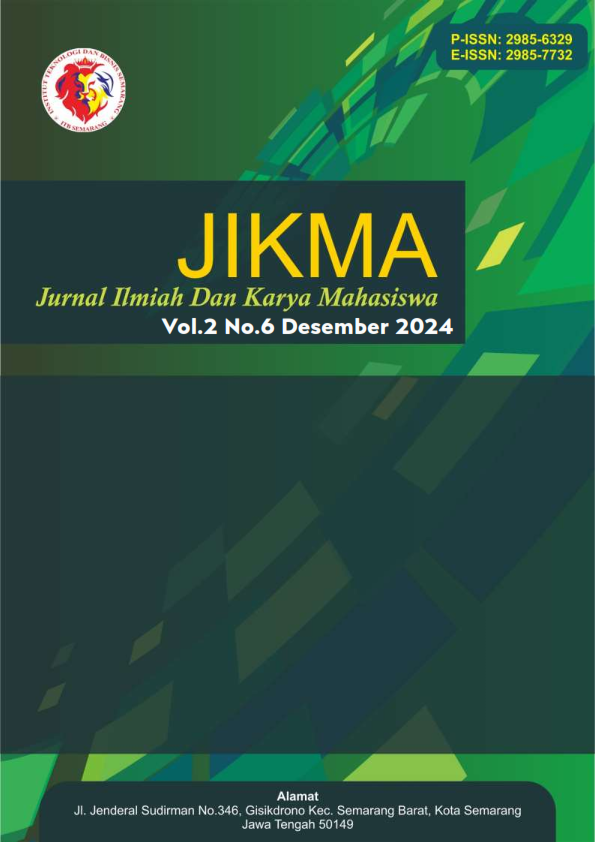Analisis Tindak Tutur Lokusi, Ilokusi dan Perlokusi dalam Iklan Beng-Beng di TV
DOI:
https://doi.org/10.54066/jikma.v2i6.2829Keywords:
Illocution, Perlocution, Advertisement, Beng-Beng, TVAbstract
Mass media, especially television, generally has a significant impact on the attitudes, views, perceptions and feelings of its audience. This is very natural because the programs displayed can make the audience feel moved or impressed, which reflects the psychological influence of television that seems to affect the audience and make them dissolved in the atmosphere displayed. Speech act is an element of pragmatics that involves interaction between speaker, listener, or writer and reader, as well as the topic being discussed. In practice, speech acts are applied in various fields of science. According to Chaer and Agustina (2004: 16), speech act is an individual phenomenon that is psychological in nature, and its continuity is influenced by the speaker's language ability and the meaning of the action expressed in speech. The structure of advertisements generally consists of four components, namely interest, desire, belief, and action. This structure is designed to trigger reactions from the audience. According to Shurter, the purpose of ad structure is to: (1) attract the reader's attention, (2) arouse desire for the product, (3) convince the reader that the product or service is the best choice, and (4) encourage the reader to take action. Illocutionary speech acts, such as those found in the advertisement “Sensation in four new Max delights in the motion of Maxx delights,” attribute the speaker to the truth of the proposition conveyed.
References
Abdul Chaer, & Agustina, L. (2004). Sosiolinguistik. Jakarta: Rineka Cipta.
Alwi, H., dkk. (2003). Kamus besar bahasa Indonesia. Jakarta: Balai Pustaka.
Danesi, M. (2010). Pesan, tanda, dan makna: Buku teks dasar mengenal semiotika dan teori komunikasi. Yogyakarta: Jalasutra.
George, Y. (2006). Pragmatik (I. F. Wahyuni & R. Mustajab, Trans.). Yogyakarta: Pustaka Pelajar.
Hanifah, N. (2014). Nilai karakter pada tindak tutur lokusi, ilokusi, dan perlokusi dalam novel Astra Astria karya Fira Basuki. Diunduh 5 Februari 2015.
Nadar, F. X. (2009). Pragmatik dan penelitian pragmatik. Yogyakarta: Graha Ilmu.
Pranowo, S. (2009). Kesantunan berbahasa tokoh masyarakat ditinjau dari aspek pragmatik. Yogyakarta: Universitas Sanata Dharma.
Rahardi, R. K. (2003). Berkenalan dengan ilmu bahasa pragmatik. Malang: DIOMA.
Rohmadi, M. (2004). Pragmatik: Teori dan analisis. Yogyakarta: Lingkar Media.
Rusminto, N. E. (2010). Analisis wacana bahasa Indonesia (Buku ajar). Bandar Lampung: FKIP Universitas Lampung.
Sugiyono. (2015). Metode penelitian kuantitatif, kualitatif, dan R&D. Bandung: Alfabeta.
Sugiyono. (2018). Metode penelitian kuantitatif, kualitatif, dan R&D (5th ed.). Bandung: Alfabeta.
Sukardi. (2003). Metodologi penelitian pendidikan kompetensi dan prakteknya. Jakarta: Bumi Aksara.
Widyatama, R. (2005). Pengantar periklanan. Jakarta Pusat: Buana Pustaka Indonesia.
Wijana, & Rohmadi, M. (2009). Analisis wacana pragmatik: Kajian teori dan analisis. Surakarta: Yuma Pustaka.
Downloads
Published
How to Cite
Issue
Section
License
Copyright (c) 2024 Jurnal Ilmiah Dan Karya Mahasiswa

This work is licensed under a Creative Commons Attribution-ShareAlike 4.0 International License.







